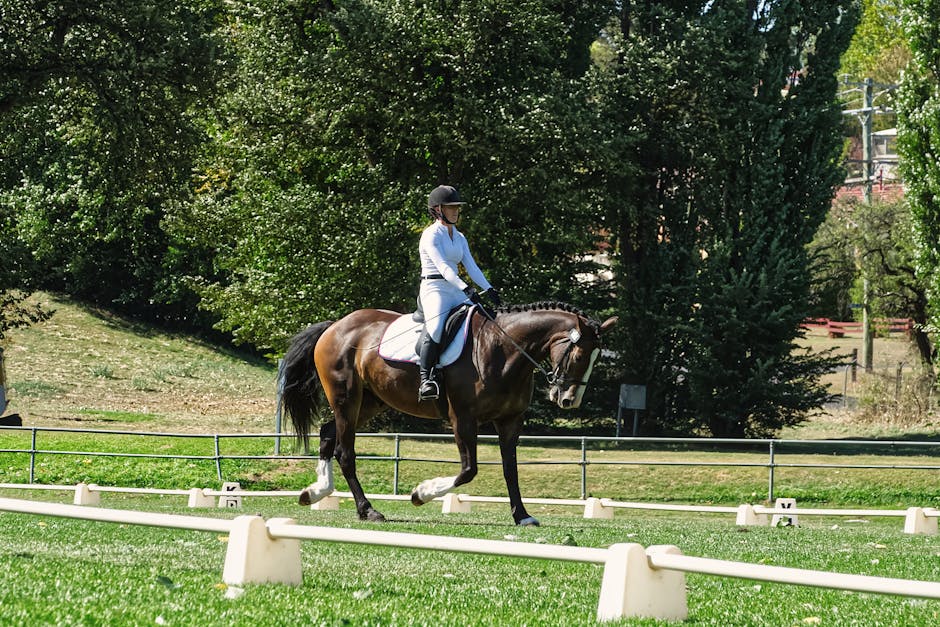Harnessing Virtual Reality: Innovative Techniques for Anxious Pets
In today's fast-paced world, filled with technological marvels, it's time to explore an exciting frontier: virtual reality (VR) for anxious pets. Imagine a world where we can ease our furry companions' fears and help them learn in a stress-free environment. You’re not alone if you’ve grappled with an anxious dog cowering at the sound of a thunderstorm or a shy cat hiding from every visitor. VR is emerging as a transformative tool in pet training, providing innovative methods to de-escalate anxiety and enhance behavioral learning. So, let’s dive deep into how VR can reshape our approach to pet care and training!
Understanding Pet Anxiety: The Need for Innovative Solutions

Pet anxiety is more common than we often acknowledge. Stressors such as loud noises, unfamiliar people, and new environments can trigger distress in our beloved animals. According to a recent study published in the Journal of Veterinary Behavior, up to 30% of dogs experience anxiety symptoms (source: Cornell University), and the numbers for cats can be comparable.
As pet owners, recognizing these signs is crucial, but addressing them effectively remains a challenge. Traditional training techniques may not always suffice, leading many to seek creative alternatives. This is where virtual reality enters the scene as an innovative solution, merging technology with animal welfare in remarkable new ways.
The Science of Virtual Reality in Animal Training

Virtual reality technology inundates users in immersive environments, allowing them to interact with simulations safely. But how does this benefit our pets? To understand this, let's break it down:
-
Controlled Exposure: Utilizing VR allows pets to be gradually introduced to environments or situations that typically cause them anxiety. For instance, using soundscapes of fireworks or thunderstorms, trainers can adjust the volume and intensity, offering a controlled experience that helps pets acclimate slowly.
-
Behavioral Simulation: VR can replicate social interactions with other pets or people, enabling shy or fearful animals to practice their responses without real-world consequences. This kind of controlled learning can reduce anxiety over time.
-
Positive Reinforcement: Combining virtual experiences with treats or toys can reinforce desired behaviors. When a dog confidently navigates a virtual park filled with other relaxed dogs, offering a treat enhances that positive association.
These unique methodologies are shifting the conversation around pet training and anxiety management, indicating a significant step forward in compassionate and effective pet care.
Innovative Techniques in Action

Step 1: An Immersive Experience

Imagine putting on a VR headset that immerses you in a calming, virtual forest. You hear the gentle sounds of rustling leaves and chirping birds. Now picture your anxious pup exploring this serene world alongside you. This immersive stimulation can dull the stress response of many animals. This technique is akin to the principles in the article Music Therapy: Transform Your Pet's Behavior with Playlists, where musical sounds can create a peaceful environment.
Step 2: Field Simulation

Field simulation is another technique where pet owners can gradually and safely expose their pets to specific triggers. For instance, when training a dog who barks uncontrollably at bicycles, VR can recreate a safe environment with virtual bikers. This exposure helps dogs understand that they are not in danger and can learn to behave calmly instead. Utilizing animal behavior fundamentals outlined in The Art of Pet Communication: Decoding Your Furry Friend's Signals allows pet owners to communicate effectively during training sessions.
Step 3: Reward and Relaxation

As your pet interacts with various VR elements—like exploring a virtual dog park—the system can incorporate rewards through augmented treats paired with stimulating visuals. This strategy enhances relaxed behavior as affirmed by comprehensive research on positive reinforcement methods.
Embracing VR with Caution

While the benefits of virtual reality in pet training are groundbreaking, it's essential to approach this new technology with caution. Not every animal will respond positively to VR experiences, and initial exposure should always be closely monitored.
- Observe for signs of overload or stress: if your pet shows signs of distress while using VR, it's crucial to remove them from the environment immediately and reassess with a professional if needed.
- Gradual introduction is key: start with short sessions and gradually increase exposure based on your pet's comfort.
- Combine technology with traditional methods: VR training shouldn't entirely replace conventional practices; instead, it complements them.
Combining VR training with hands-on approaches discussed in articles like The Science of Pet Playdates: Discover Emotional Wellness Skills encourages socialization while maintaining realism.
Real-World Applications and Success Stories

Numerous success stories are emerging as pet trainers experiment with VR technology. For example, a renowned pet rehabilitation center in California used VR for dogs with severe fear-based aggression. By simulating environments where the dogs felt uncomfortable, trainers were able to gradually reduce exposure to distressing stimuli, successfully modifying their behavior over time. These outcomes support findings discussed in Gamifying Pet Training: Boost Cognitive Skills & Bonding Fun, where behavioral improvements through engagement show impressive results.
Similarly, cats fearful of visitors and loud sounds have benefited from desensitization sessions in VR, exploring their environments at their own pace, ultimately leading to a more relaxed demeanor during real-life interactions.
More Virtual Reality Techniques

The horizons of virtual reality don't end here. As technology advances, pet trainers are uncovering diverse methods of utilizing this tool effectively:
-
Pet Playgrounds in VR: Integrating interactive play spaces within VR allows dogs to engage in activities that promote active learning. Certain VR programs can simulate fetching balls or interactive puzzles that encourage cognitive stimulation.
-
Virtual Vet Visits: For pets who are tense during veterinary visits, a VR session mimicking a calm vet's office could help them recognize it's a safe space, reducing anxiety and fear.
-
Sensory Enrichment: Incorporating various sensory experiences—like sounds of rivers flowing or sunlight filtering through trees—can craft environments that are both engaging and soothing, perfect for nervous pets needing enriched experiences.
The Future is Bright: VR and Animal Welfare

The potential of virtual reality in pet training signifies a fascinating frontier where technology meets pet welfare. As this field grows and evolves, continuous study and adaptation in the methodologies will play a crucial role.
By using innovative techniques and incorporating tools that enhance pet well-being, pet owners can foster deeper bonds and more rewarding experiences. You can be at the forefront of this change—consider exploring these cutting-edge training methods for your furry friends and see how they respond to the virtual world!
Next Steps: Implementing Virtual Reality Techniques
Now that we’ve explored the innovative power of virtual reality for anxious pets, embracing these techniques can lead to transformational experiences for both you and your companions.
- Research Available Programs: Identify VR platforms that offer pet-friendly simulations designed to tackle anxiety.
- Incorporate Gradually: Introduce VR gradually, starting with short sessions and monitoring your pet's reactions closely.
- Pair with Real Experiences: Combine virtual training with on-ground practices, such as walks in the park where your pet can meet other friendly dogs in a controlled environment.
As you embark on this VR exploration, remember that patience, observation, and creativity will be your best allies in building your pet's confidence.
: Unearth the innovative potential of virtual reality for anxious pets! Explore techniques, tips, and success stories that transform training experiences today.



